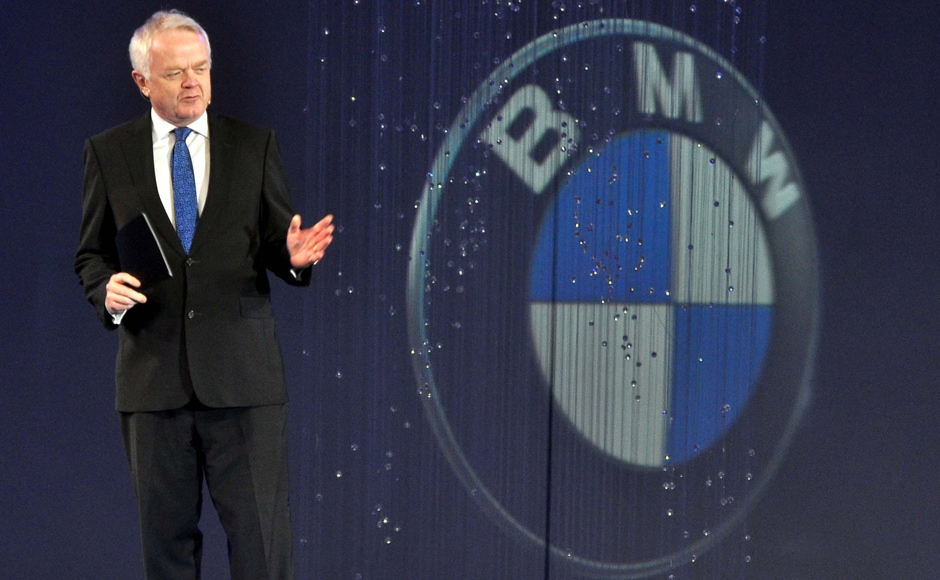Navigating The Chinese Market: Case Studies Of BMW, Porsche, And Other Automakers

Table of Contents
Understanding the Unique Landscape of the Chinese Automotive Market
The Chinese automotive market is not a monolith; it's a complex ecosystem with diverse regional characteristics and evolving consumer preferences. Successfully navigating this market demands a deep understanding of its multifaceted nature.
The Sheer Size and Complexity
China's sheer size and diverse geography create a complex market. Consumer preferences and purchasing power vary significantly across different regions:
- Tier 1 cities (Beijing, Shanghai, Guangzhou, Shenzhen) boast higher disposable incomes and a preference for luxury and technologically advanced vehicles.
- Tier 2 and 3 cities represent a significant portion of the market, with consumers often prioritizing value for money and fuel efficiency.
- Government regulations, including emission standards and incentives for electric vehicles (EVs), play a crucial role in shaping the market landscape. These regulations are constantly evolving, requiring automotive companies to adapt quickly.
Evolving Consumer Preferences
Chinese car buyers' preferences are dynamic and sophisticated. While price remains a factor, other elements are increasingly important:
- SUV dominance: SUVs have experienced explosive growth, surpassing sedans in popularity.
- Electric vehicle (EV) adoption: The Chinese government's strong push towards EVs is driving significant demand, creating a crucial opportunity for automakers.
- Technology integration: Chinese consumers highly value advanced technology features, including connectivity, infotainment systems, and autonomous driving capabilities.
- Brand image and social status: Brand recognition and perceived social status significantly influence purchasing decisions.
Government Regulations and Policies
Government policies play a dominant role in shaping the Chinese automotive industry:
- Joint venture requirements: While these have eased in recent years, collaborations with local partners remain crucial for efficient market entry and navigating regulatory hurdles.
- Emission standards: Stringent emission regulations are driving the development and adoption of cleaner vehicles, including EVs and hybrids.
- Subsidies and incentives: Government subsidies for electric vehicles significantly impact the market, creating a competitive advantage for companies focusing on this segment.
Case Study: BMW's Success in China
BMW's success in China exemplifies a strategic approach to market entry and localization.
Localization Strategy
BMW's localization strategy has been instrumental in its success:
- Long-term partnerships: Collaborations with local manufacturers have enabled efficient production and distribution networks.
- Tailored models and features: BMW offers models specifically designed to meet the preferences of Chinese consumers, incorporating features such as extended wheelbases and enhanced comfort options.
- Targeted marketing campaigns: BMW's marketing campaigns are carefully crafted to resonate with the specific cultural nuances and preferences of the Chinese market.
Manufacturing and Supply Chain
BMW’s manufacturing strategy in China focuses on efficiency and cost-effectiveness:
- Local manufacturing facilities: Establishing manufacturing plants in China ensures proximity to consumers, reduces transportation costs, and facilitates quicker responses to market demands.
- Local sourcing of parts: Sourcing components locally reduces costs and strengthens relationships with local suppliers.
Marketing and Brand Building
BMW has effectively cultivated its brand image in China through strategic marketing:
- Celebrity endorsements: Utilizing high-profile Chinese celebrities in marketing campaigns has proven highly effective in raising brand awareness and enhancing brand perception.
- Social media marketing: A strong social media presence across platforms like WeChat and Weibo is crucial for engaging with the target audience.
- Sponsorship of local events: Sponsoring major cultural and sporting events helps BMW connect with Chinese consumers on a deeper level.
Case Study: Porsche's Niche Approach in China
Porsche's success in China showcases the potential of a focused, high-end strategy.
Targeting High-End Consumers
Porsche strategically targets affluent Chinese consumers:
- Luxury positioning: Maintaining a strong emphasis on luxury and exclusivity resonates with the target demographic.
- Exclusive dealerships: Porsche's exclusive dealerships provide a premium customer experience, reinforcing the brand's high-end image.
- Personalized customer service: Providing customized services and experiences builds strong customer loyalty.
Emphasis on Brand Heritage and Exclusivity
Porsche leverages its history and brand prestige:
- Focus on driving experience: Highlighting the exceptional driving experience associated with Porsche vehicles is key to attracting discerning customers.
- Emphasis on craftsmanship and quality: Emphasizing the high quality and craftsmanship of its vehicles reinforces the brand's image of excellence.
- Maintenance of brand image: Maintaining a consistent and exclusive brand image is critical for attracting and retaining high-net-worth individuals.
Digital Marketing Strategies
Porsche effectively utilizes digital channels to reach its target audience:
- Use of social media platforms (WeChat, Weibo): Engaging content and targeted advertising on popular social media platforms are crucial for reaching affluent consumers.
- Online advertising: Utilizing targeted online advertising campaigns enables Porsche to reach its niche audience effectively.
- Virtual showrooms: Offering virtual showroom experiences allows potential customers to explore Porsche models remotely, enhancing accessibility.
Lessons Learned and Best Practices for Other Automakers
The successes of BMW and Porsche highlight several key principles for navigating the Chinese automotive market:
Importance of Localization
Adapting products and marketing to suit the specific needs and preferences of the Chinese market is paramount.
Building Strong Partnerships
Collaboration with local manufacturers, suppliers, and government entities is crucial for success.
Understanding Cultural Nuances
Cultural sensitivity in all aspects of marketing, brand building, and customer interaction is essential.
Embracing Digital Transformation
A robust digital presence and a strong digital engagement strategy are critical for connecting with consumers.
Conclusion
The Chinese automotive market presents significant challenges and immense opportunities. BMW and Porsche's successes demonstrate the importance of localization, strong partnerships, and a profound understanding of Chinese consumer preferences. To thrive in this dynamic market, automakers must embrace digital transformation and adapt their strategies continuously. By learning from these case studies and adapting their approaches accordingly, foreign automakers can effectively navigate the complexities of the Chinese market and achieve remarkable success in this rapidly growing automotive landscape. Further research into specific government regulations and evolving consumer trends is crucial for developing a tailored strategy. Begin your journey into the Chinese automotive market today!

Featured Posts
-
 Housing Market Update Metro Vancouver Rent Increases Ease But Prices Stay Elevated
Apr 28, 2025
Housing Market Update Metro Vancouver Rent Increases Ease But Prices Stay Elevated
Apr 28, 2025 -
 Where To Invest Mapping The Countrys Top Business Hot Spots
Apr 28, 2025
Where To Invest Mapping The Countrys Top Business Hot Spots
Apr 28, 2025 -
 Blue Jays Vs Yankees Spring Training Live Stream Time Channel Info
Apr 28, 2025
Blue Jays Vs Yankees Spring Training Live Stream Time Channel Info
Apr 28, 2025 -
 Boston Red Sox Adjust Lineup Casas Lowered Outfielder Returns From Slump
Apr 28, 2025
Boston Red Sox Adjust Lineup Casas Lowered Outfielder Returns From Slump
Apr 28, 2025 -
 Mets Option Deniel Nez To Syracuse Megill Returns To Rotation
Apr 28, 2025
Mets Option Deniel Nez To Syracuse Megill Returns To Rotation
Apr 28, 2025
Latest Posts
-
 58 Salinda And Velo Take The Lead At Zurich Classic Golf Tournament
May 12, 2025
58 Salinda And Velo Take The Lead At Zurich Classic Golf Tournament
May 12, 2025 -
 Salinda And Velo In Command After Stunning 58 At Zurich Classic
May 12, 2025
Salinda And Velo In Command After Stunning 58 At Zurich Classic
May 12, 2025 -
 Celebrating Success Shane Lowrys Pride In Rory Mc Ilroy
May 12, 2025
Celebrating Success Shane Lowrys Pride In Rory Mc Ilroy
May 12, 2025 -
 Zurich Classic Salinda And Velo Set The Pace With Record Setting Round
May 12, 2025
Zurich Classic Salinda And Velo Set The Pace With Record Setting Round
May 12, 2025 -
 Rory Mc Ilroys Daughters Golfing Prowess At Augusta
May 12, 2025
Rory Mc Ilroys Daughters Golfing Prowess At Augusta
May 12, 2025
